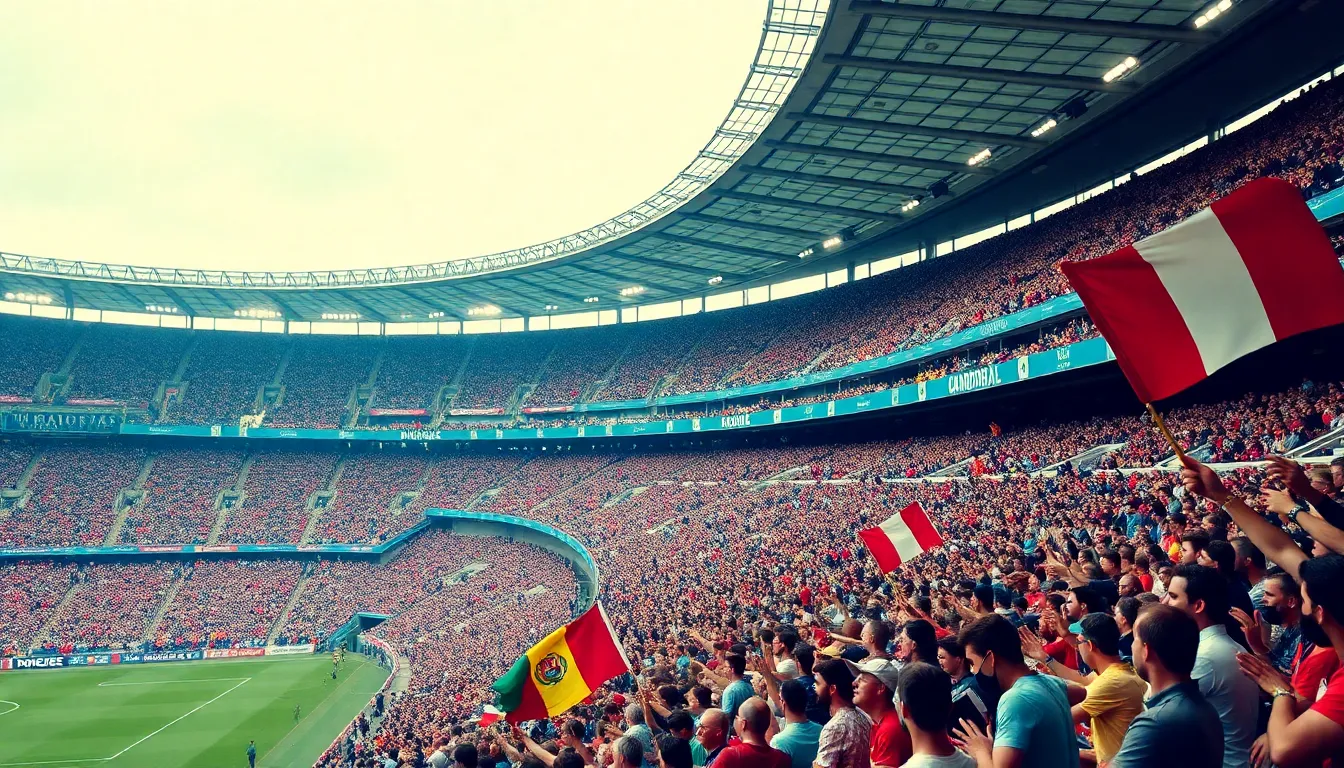The UEFA Nations League has transformed the way fans experience international football, turning every match into a nail-biting spectacle. With teams vying for glory and a shot at the prestigious trophy, the competition is more intense than ever. Fans are glued to their screens, eagerly tracking the latest standings and rooting for their favorite squads.
Table of Contents
ToggleOverview of UEFA Nations League Positions
UEFA Nations League positions represent the rankings of national teams based on their performance in the tournament. These positions are crucial as they determine the teams’ fates in subsequent competitions, like the UEFA European Championship. Teams earn points through match victories, with higher points reflecting better performance.
A league structure organizes the teams into different tiers, known as leagues A, B, C, and D. Each league comprises groups where teams compete for points while aiming for promotion to a higher league or to avoid relegation. Victory earns three points, a draw one point, and a loss yields no points. The competitive nature of these matches keeps teams striving for excellence.
Standings are updated after each match day and published on official UEFA platforms. Fans can track their favorite teams’ progress in real-time, fueling engagement and excitement surrounding match outcomes. Regular updates allow supporters to stay informed and follow their teams throughout the tournament.
Promotion and relegation from leagues depend on overall standings. The top teams in leagues B, C, and D advance to the next higher league, while those at the bottom of each league face relegation. Such dynamics maintain competitive balance and encourage teams to perform consistently.
Playoffs for the Nations League provide additional opportunities for teams to secure a spot in major tournaments. These knockout stages add further excitement, intensifying the competition among participating nations. Collectively, the ranking system and playoff format enhance the overall landscape of international football, underscoring the significance of each match in shaping the final standings.
Current Standings and Insights

The UEFA Nations League standings reveal the ongoing competitive landscape of international football. Fans can track their teams’ progress as they vie for top positions and aim for prestigious tournament placements.
Top Performing Teams
Leading the standings, several teams have distinguished themselves through consistent performances. Spain, currently positioned at the top of League A, boasts a strong record with five wins and one draw. Germany follows closely, accumulating notable points through recent victories. France remains a strong contender, steadily climbing the ranks while showcasing a solid goal difference. The dynamic nature of these rankings highlights how quickly teams can shift positions with every match day.
Key Matches Influencing Positions
Critical matches have significantly influenced the UEFA Nations League standings. Spain’s clash against Germany last month shifted dynamics, resulting in Spain securing a vital three points. France’s recent match, where it edged out Italy, also played a crucial role in altering the outlook for both teams. Upcoming fixtures promise further excitement, as top teams face off with everything at stake, making each match crucial for aspirations of promotion or avoiding relegation. Results from these encounters directly impact the standings, keeping fans engaged throughout the tournament.
Impact of Positions on Future Competitions
The final rankings in the UEFA Nations League significantly influence future tournament qualifications. Top-performing teams secure berths in major international competitions, such as the UEFA European Championship. Teams in League A, for instance, earn direct qualification, while those in lower leagues seek to advance through play-offs. A strong finish in the Nations League not only boosts a team’s confidence but also enhances their stature in international football.
Qualification for Major Tournaments
Qualification pathways depend heavily on Nations League placements. The top teams from each league gain spots in prestigious events like the UEFA European Championship. Play-off slots allow other competitive teams to vie for entry, adding layers of strategy. Performance consistency offers teams better chances throughout the tournament cycle. Each victory in the Nations League directly increases possibilities for participating in these high-stakes competitions.
Implications for National Teams
National teams face both opportunities and risks based on their Nations League standings. A strong position ensures higher visibility on the international stage, attracting talent and investment. Conversely, poor performance may lead to relegation, diminishing competitive opportunities. Teams must maintain focus during every match, as results directly affect their overall trajectory. The need for strategic planning becomes paramount, with each position holding significance for future success.
Historical Context of UEFA Nations League Positions
The UEFA Nations League debuted in 2018, creating a new competitive structure for European national teams. This league addressed issues with international friendlies, replacing them with meaningful matches that influence rankings. Teams now compete within four distinct leagues: A, B, C, and D, each structured to promote competitive balance.
Points determine league standings, with victories and draws contributing to a team’s total. Performing well in this league has significant implications for national teams, especially regarding UEFA European Championship qualifications. Teams finishing at the top of League A secure direct spots, while those in lower leagues can aim for playoffs to advance.
Historical data shows the dynamic nature of these standings. For instance, Spain leads League A with an impressive five wins and one draw, demonstrating their strength and consistency. Germany and France closely follow, illustrating a tight race among elite teams. Key match results, such as Spain’s encounters with Germany, showcase how results directly impact rankings.
Each match day updates standings, allowing fans to monitor their favorite teams’ progress. With every fixture, teams face the dual pressures of pursuing victory and avoiding relegation. Notably, teams with strong finishes gain enhanced visibility in international competitions, leading to greater opportunities for talent acquisition and sponsorships.
Through its structure, the UEFA Nations League has redefined international football. Development of this competition emphasizes strategies, as positioning in the league significantly influences future tournament entries. Ultimately, historical context reveals how both victories and defeats can shape a nation’s footballing legacy.
The UEFA Nations League has transformed the landscape of international football by creating a competitive environment that keeps fans on the edge of their seats. With each match affecting the standings, teams are highly motivated to perform at their best, knowing that their positions not only influence immediate outcomes but also future tournament qualifications.
As the league progresses, the excitement surrounding key matchups continues to grow, with teams like Spain, Germany, and France leading the charge. The dynamic nature of the standings ensures that every game counts, making the journey toward promotion or relegation a thrilling experience for supporters. Ultimately, the UEFA Nations League has redefined how national teams approach international play, emphasizing the critical importance of each match in shaping their footballing legacy.



